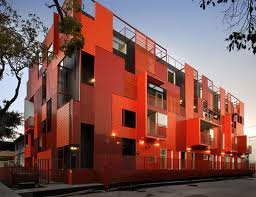The segment of the housing industry that caters to those home buyers and renters who are 55+ years old saw gradual but steady improvement in 2011. This trend is expected to continue throughout 2012 as more baby boomers turn 55 and seek new homes and communities that offer the lifestyle they desire. However, since the conditions of the current overall housing market are limiting their ability to sell their existing homes, this market is not recovering as quickly as might have been expected.
Like the overall single-family housing market, the 55+ housing segment is facing a slow but steady recovery. "NAHB is projecting that the number of housing starts in 55+ communities will increase 18 percent to 53,200 units in 2012, and another 25 percent, to 66,600 in 2013," said Paul Emrath, NAHB's vice president of survey and housing policy research.
Emrath said the multifamily segment of the 55+ housing market is doing particularly well, with an estimated 57% increase to 21,300 starts in 2011, and further increases in the forecast of 25,400 new apartments in 2012 and 29,100 in 2013.
According to NAHB, the 55+ housing market should continue to gradually improve over the next few years. "Nevertheless, this market remains fragile as many people in this sector who would like to purchase a new home are having difficulties selling their existing homes," noted Emrath. "The issues constraining their ability to sell are the same issues restraining the overall single-family housing market - low appraisals, a large supply of foreclosures and tighter mortgage lending criteria."
Knowing their customer base is important for builders' success in the current economic climate. "The 55+ builders who are doing well in these challenging times are innovative and creative and are in touch with their customer base," said W. Don Whyte, president of Kennecott Land in South Jordan, Utah, and incoming chairman of NAHB's 50+ Housing Council. "Successful builders also continually conduct market research on buyer's preferences and needs."
"Meeting the needs of buyers in the 55+ market involves having a more focused and targeted strategy on how to design, build and market new homes," said Whyte. "Successful builders and developers in the current market will encompass this approach." BD+C
Related Stories
University Buildings | Jun 28, 2024
The American University in Cairo launches a 270,000-sf expansion of its campus in New Cairo, Egypt
In New Cairo, Egypt, The American University in Cairo (AUC) has broken ground on a roughly 270,000-sf expansion of its campus. The project encompasses two new buildings intended to enhance the physical campus and support AUC’s mission to provide top-tier education and research.
MFPRO+ New Projects | Jun 27, 2024
Chicago’s long-vacant Spire site will be home to a two-tower residential development
In downtown Chicago, the site of the planned Chicago Spire, at the confluence of Lake Michigan and the Chicago River, has sat vacant since construction ceased in the wake of the Great Recession. In the next few years, the site will be home to a new two-tower residential development, 400 Lake Shore.
Codes and Standards | Jun 27, 2024
Berkeley, Calif., voters will decide whether to tax large buildings with gas hookups
After a court struck down a first-in-the-nation ban on gas hookups in new buildings last year, voters in Berkeley, Calif., will have their say in November on a measure to tax large buildings that use natural gas.
Mass Timber | Jun 26, 2024
Oregon State University builds a first-of-its-kind mass timber research lab
In Corvallis, Oreg., the Jen-Hsun Huang and Lori Mills Huang Collaborative Innovation Complex at Oregon State University aims to achieve a distinction among the world’s experimental research labs: It will be the first all-mass-timber lab meeting rigorous vibration criteria (2000 micro-inches per second, or MIPS).
Sustainability | Jun 26, 2024
5 ways ESG can influence design and create opportunities
Gensler sustainability leaders Stacey Olson, Anthony Brower, and Audrey Handelman share five ways they're rethinking designing for ESG, using a science-based approach that can impact the ESG value chain.
Student Housing | Jun 25, 2024
P3 student housing project with 176 units slated for Purdue University Fort Wayne
A public/private partnership will fund a four-story, 213,000 sf apartment complex on Purdue University Fort Wayne’s (PFW’s) North Campus in Fort Wayne, Indiana. The P3 entity was formed exclusively for this property.
Sustainability | Jun 24, 2024
CBRE to use Climate X platform to help clients calculate climate-related risks
CBRE will use risk analysis platform Climate X to provide climate risk data to commercial renters and property owners. The agreement will help clients calculate climate-related risks and return on investments for retrofits or acquisitions that can boost resiliency.
MFPRO+ News | Jun 24, 2024
‘Yes in God’s Backyard’ movement could create more affordable housing
The so-called “Yes in God’s Backyard” (YIGBY) movement, where houses of worship convert their properties to housing, could help alleviate the serious housing crisis affecting many communities around the country.
Student Housing | Jun 20, 2024
How student housing developments are evolving to meet new expectations
The days of uninspired dorm rooms with little more than a bed and a communal bathroom down the hall are long gone. Students increasingly seek inclusive design, communities to enhance learning and living, and a focus on wellness that encompasses everything from meditation spaces to mental health resources.
Museums | Jun 20, 2024
Connecticut’s Bruce Museum more than doubles its size with a 42,000-sf, three-floor addition
In Greenwich, Conn., the Bruce Museum, a multidisciplinary institution highlighting art, science, and history, has undergone a campus revitalization and expansion that more than doubles the museum’s size. Designed by EskewDumezRipple and built by Turner Construction, the project includes a 42,000-sf, three-floor addition as well as a comprehensive renovation of the 32,500-sf museum, which was originally built as a private home in the mid-19th century and expanded in the early 1990s.

















